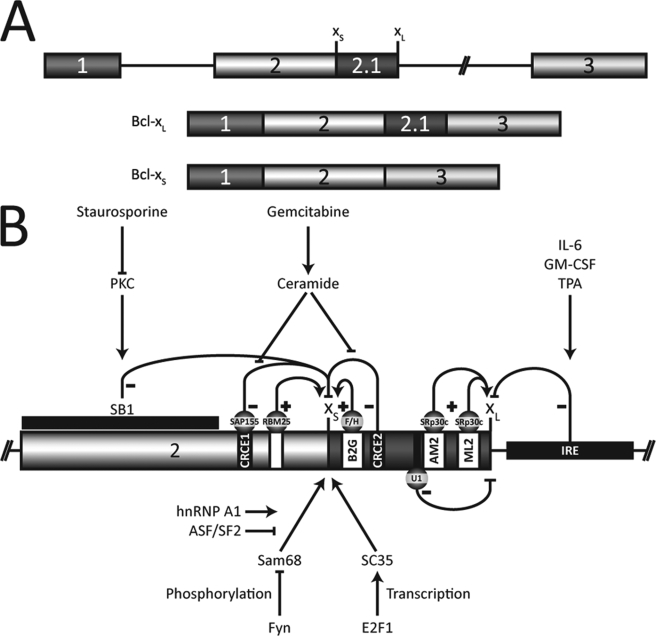FIGURE 1.
A, alternative splicing of Bcl-x produces two major isoforms, Bcl-xL and Bcl-xS. B, regulation of Bcl-x alternative splicing. The enhancer elements are shown as white boxes, and the repressors are black. The pointed and flat arrows indicate positive and negative regulation, respectively. Protein kinase C inhibition relieves repression caused by the SB1 element on the Bcl-xS splice site (36). The repressor elements CRCE1, recognized by SAP155, and CRCE2 mediate the production of Bcl-xS by ceramide as when induced by gemcitabine in A549 cells (38, 39). hnRNP F/H binds to the B2G element to enhance the production of the Bcl-xS isoform (41). RBM25, through an element located upstream of the Bcl-xS splice site, can also augment its use (44). A large intronic region (IRE) mediates the Bcl-xL increase caused by interleukin-6 (IL-6), granulocyte-macrophage colony-stimulating factor (GM-CSF), and 12-O-tetradecanoylphorbol-13-acetate (TPA) (35). Finally, the B3 region also enhances Bcl-xL formation through the binding of SRp30c to AM2 and ML2 and the U1 snRNP to two cryptic 5′ splice sites (42).

